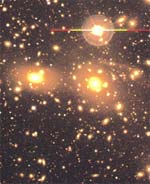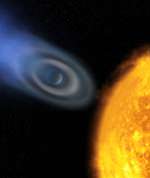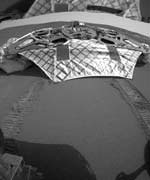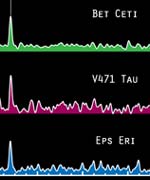
Image credit: RAS
In recent years, astronomers have obtained detailed measurements of the cosmic microwave background radiation – the ‘echo’ from the birth of the Universe during the Big Bang.
These results appear to indicate with remarkable precision that our Universe is dominated by mysterious ‘cold dark matter’ and ‘dark energy’. But now a group of UK astronomers has found evidence that the primordial microwave echoes may have been modified or ‘corrupted’ on their 13 billion year journey to the Earth.
The results from a team at the University of Durham, led by Professor Tom Shanks, are based on a new analysis of data from NASA’s Wilkinson Microwave Anisotropy Probe (WMAP) satellite.
The team has found that nearby galaxy clusters appear to lie in regions of sky where the microwave temperature is lower than average. This behaviour could be accounted for if the hot gas in the galaxy clusters has interacted with the Big Bang photons as they passed by and corrupted the information contained in this echo of the primordial fireball. Russian physicists R. A. Sunyaev and Ya. B. Zeldovich predicted such an effect in the early 1970’s, shortly after the discovery of the cosmic microwave background radiation.
This Sunyaev-Zeldovich effect has previously been seen in the cases of detailed observations of the microwave background in the vicinity of a few rich galaxy clusters and the WMAP team themselves have reported seeing the effect in their own data, close to cluster centres.
Now the Durham team has found evidence that hot gas in the clusters may influence the microwave background maps out to a radius of nearly 1 degree from the galaxy cluster centres, a much larger area than previously detected. This suggests that the positions of “clusters of clusters” or “superclusters” may also coincide with cooler spots in the pattern of microwave background fluctuations.
“The photons in the microwave background radiation are scattered by electrons in nearby clusters,” said Professor Shanks. “This causes important changes to the radiation by the time it reaches us.”
“If the galaxy clusters located several billion light years from Earth also have the same effect, then we must consider whether it is necessary to modify our interpretation of the satellite maps of the microwave background radiation.”
If the Durham result is confirmed, then the consequences for cosmology could be highly significant. The signature for dark energy and dark matter lies in the detailed structure of the ripples detected in the microwave background, tiny temperature variations that were created at a time when the radius of the Universe was a thousand times smaller than it is today.
If this primordial pattern has been corrupted by processes taking place in the recent past, long after galaxies and galaxy clusters formed, then it will, at best, complicate the interpretation of the microwave echo and, at worst, begin to undermine the previous evidence for both dark energy and cold dark matter.
“The power of this wonderful WMAP data is that it indicates that interpreting the microwave background ‘echo’ may be less straightforward than previously thought,” said team member Sir Arnold Wolfendale (previously Astronomer Royal).
The WMAP team has already reported that their measurements of the Big Bang’s microwave echo may have been compromised by the process of galaxy formation at an intermediate stage in the Universe’s history. They presented evidence that gas heated by first-born stars, galaxies and quasars may have also corrupted the microwave signal when the Universe was 10 or 20 times smaller than at the present day. Thus both the WMAP and Durham results suggest that the microwave echo of the Big Bang may have had to come through many more obstacles on its journey to the Earth than had previously been thought, with consequent possible distortion of the primordial signal.
“Our results may ultimately undermine the belief that the Universe is dominated by an elusive cold dark matter particle and the even more enigmatic dark energy,” said Professor Shanks.
Although the observational evidence for the standard model of cosmology remains strong, the model does contain very uncomfortable aspects. These arise first because it is based on two pieces of “undiscovered physics” – cold dark matter and dark energy – neither of which has been detected in the laboratory. Indeed, the introduction of these two new components greatly increases the complication of the standard Big Bang inflationary model.
The problems of dark energy run particularly deep: for example, its observed density is so small that it may be quantum mechanically unstable. It also creates problems for the theories of quantum gravity, which suggest that we may live in a Universe with 10 or 11 dimensions, all of them shrunk, with the exceptions of three in space and one in time.
Many theorists would therefore like an escape route from today’s standard model of cosmology and it remains to be seen how far these observations discussed by the Durham group will go in this direction. But if correct, they suggest that the rumours that we are living in a “New Era of Precision Cosmology” may prove to be premature!
Original Source: RAS News Release







